
Omokdae and Imokdae: Historic Gems in Jeonju
Discover the historical and cultural treasures of Omokdae and Imokdae, offering stunning views and enriching experiences in the heart of Jeonju, South Korea.
Nestled in the heart of Jeonju, Omokdae and Imokdae are two historic pavilions that offer a glimpse into South Korea's rich cultural heritage. These sites are not just architectural marvels but also hold great historical significance. Omokdae is where King Taejo, the founder of the Joseon Dynasty, celebrated his victory over Japanese invaders. Imokdae, on the other hand, is a serene spot that provides panoramic views of Jeonju Hanok Village, making it a perfect place for both history buffs and photography enthusiasts. Visitors to Omokdae and Imokdae can enjoy a leisurely walk through well-maintained gardens, offering a tranquil escape from the bustling city life. The pavilions are connected by a scenic walking path that is especially beautiful during the cherry blossom season. The area is also dotted with informative plaques that provide insights into the historical events associated with these sites, making it an educational experience for all ages. Omokdae and Imokdae are not just about history and views; they also serve as cultural hubs where traditional Korean performances and events are often held. These events provide a unique opportunity to immerse oneself in Korean culture and traditions. Whether you're a history enthusiast, a nature lover, or someone looking to experience Korean culture, Omokdae and Imokdae offer something for everyone.
Local tips in Omokdae and Imokdae
- Visit early in the morning to avoid crowds and enjoy peaceful surroundings.
- Check the local event calendar for traditional performances and cultural events.
- Wear comfortable walking shoes as the area involves a bit of hiking.
- Spring is the best time to visit for cherry blossoms and scenic beauty.
- Bring a camera to capture the panoramic views and historical architecture.
Omokdae and Imokdae: Historic Gems in Jeonju
Nestled in the heart of Jeonju, Omokdae and Imokdae are two historic pavilions that offer a glimpse into South Korea's rich cultural heritage. These sites are not just architectural marvels but also hold great historical significance. Omokdae is where King Taejo, the founder of the Joseon Dynasty, celebrated his victory over Japanese invaders. Imokdae, on the other hand, is a serene spot that provides panoramic views of Jeonju Hanok Village, making it a perfect place for both history buffs and photography enthusiasts. Visitors to Omokdae and Imokdae can enjoy a leisurely walk through well-maintained gardens, offering a tranquil escape from the bustling city life. The pavilions are connected by a scenic walking path that is especially beautiful during the cherry blossom season. The area is also dotted with informative plaques that provide insights into the historical events associated with these sites, making it an educational experience for all ages. Omokdae and Imokdae are not just about history and views; they also serve as cultural hubs where traditional Korean performances and events are often held. These events provide a unique opportunity to immerse oneself in Korean culture and traditions. Whether you're a history enthusiast, a nature lover, or someone looking to experience Korean culture, Omokdae and Imokdae offer something for everyone.
Iconic landmarks you can’t miss
Jeonju Hanok Village
Experience traditional Korean culture in the heart of Jeonju at Hanok Village, home to stunning architecture, delicious cuisine, and vibrant local traditions.

Jeonju Hyanggyo
Explore Jeonju Hyanggyo, a historical landmark that embodies Korea's Confucian heritage and offers a serene escape in the heart of Jeonju.
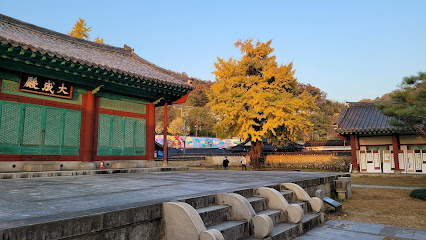
Jaman Mural Village
Explore Jaman Mural Village, a vibrant artistic haven in Jeonju-si, where colorful murals breathe life into culture and creativity.

Cheongyeollu
Discover Cheongyeollu, a serene tourist attraction in Jeonju, South Korea, where nature and culture blend harmoniously for an unforgettable experience.

Omokdae
Explore Omokdae, a historical landmark in Jeonju, where stunning views and rich Korean history come together for an unforgettable experience.
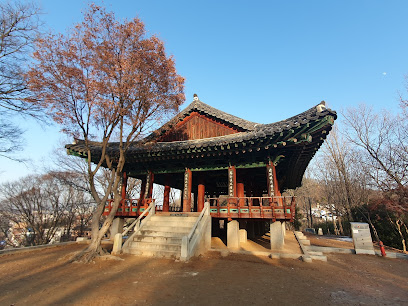
Hanbyeokdang Pavilion
Experience the historical beauty and tranquility of Hanbyeokdang Pavilion in Jeonju, a captivating destination for culture and nature lovers.

Imogdae
Discover the breathtaking views and rich cultural heritage of Imogdae, a historical gem in Jeonju's enchanting landscape.

한옥마을전망대
Discover breathtaking panoramic views and the vibrant culture of Jeonju from its stunning observation deck, a must-visit for every traveler.

한옥마을 거리
Discover Jeonju's Hanok Village: A breathtaking blend of traditional architecture, rich culture, and delectable cuisine in South Korea.
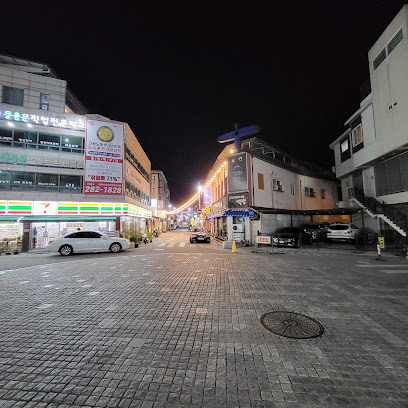
Dongmu
Experience the rich history and cultural beauty of Dongmu, a must-visit historical landmark in Jeonju, South Korea, surrounded by scenic attractions.

Unmissable attractions to see
Gyeonggijeon Shrine
Explore Gyeonggijeon Shrine, a historical landmark in Jeonju, South Korea, showcasing stunning architecture and rich cultural heritage.

Cheongyeollu
Discover Cheongyeollu, a tranquil tourist attraction in Jeonju, blending rich cultural heritage and stunning natural beauty for an unforgettable experience.

Omokdae
Explore the historical significance and stunning views of Omokdae in Jeonju, a must-visit landmark showcasing Korea's rich heritage.
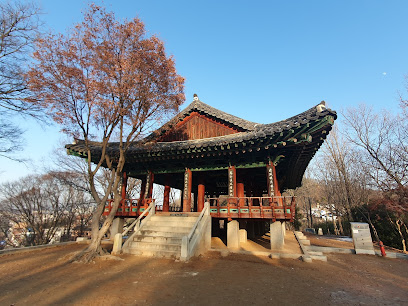
Imogdae
Experience the rich historical heritage of Imogdae, offering stunning views of Jeonju's Hanok village and a serene atmosphere for every traveler.

한옥마을 거리
Explore Jeonju's Hanok Village, a captivating blend of traditional Korean architecture, delicious street food, and vibrant culture in the heart of South Korea.

Dongmu
Explore Dongmu, a captivating historical landmark in Jeonju-si, where rich cultural heritage meets stunning architecture in a picturesque setting.

Essential places to dine
Veteran Kalguksu
Experience authentic Korean flavors at Veteran Kalguksu – home to delicious handmade noodle soups in Jeonju-si.

Grandma’s Best
Discover the sweetest side of Jeonju at Grandma’s Best, where traditional Korean desserts meet modern culinary delights.

구프오프(goof-off)
Savor the finest brunch at 구프오프 (Goof-Off) in Jeonju-si, where delightful dishes meet a cozy atmosphere perfect for any occasion.
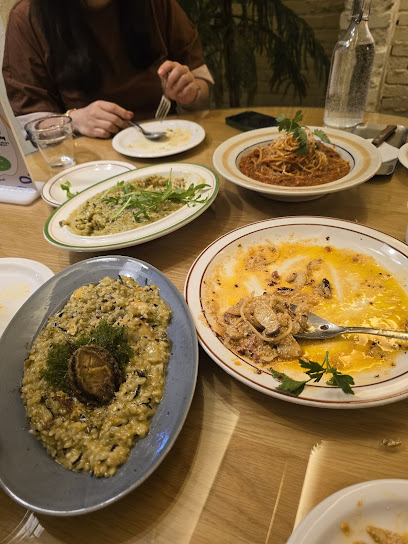
Jeonmang | Cafe & Guesthouse
Discover comfort and culinary delights at Jeonmang Cafe & Guesthouse in beautiful Jeonju.

Jeonju Hyundaiok
Experience the rich flavors of traditional Korean cuisine at Jeonju Hyundaiok in Jeonju-si, where culture meets culinary excellence.

45-year-old traditional bibimbap Jongno Hall
Experience authentic Korean bibimbap at the historic Jongno Hall - where tradition meets taste in Jeonju.

Haeyuldam
Discover the authentic taste of Korean barbecue at Haeyuldam in Jeonju – where tradition meets flavor!

Omokdae
Explore Omokdae: A Historical Landmark in Jeonju Offering Stunning Views and Cultural Richness.

Jeondong Ddeokgalbi
Experience authentic Korean cuisine at Jeondong Ddeokgalbi in Jeonju—home of delicious ddeokgalbi and rich culinary traditions.

Jeonju hanok village restaurant jeonju is jeonju
Savor traditional Korean flavors in an enchanting setting at Jeonju Hanok Village Restaurant—where culture meets cuisine.

Markets, malls and hidden boutiques
Jeonju Hanok Village
Discover the traditional beauty and vibrant culture of Jeonju Hanok Village, a must-visit destination for an authentic Korean experience.

Nambu Market
Explore Nambu Market: A Cultural and Culinary Gem in Jeonju, South Korea, Where Tradition Meets Vibrancy.

LOTTE Department Store Jeonju
Experience the best of shopping and dining at LOTTE Department Store Jeonju, where local culture meets global brands in a vibrant retail haven.
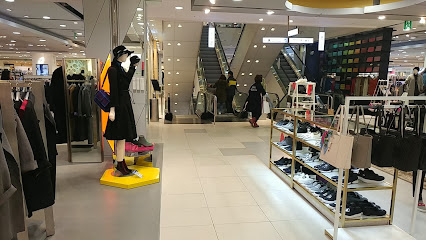
Jaman Mural Village
Explore the artistic heart of Jeonju at Jaman Mural Village, where vibrant street art meets traditional Korean charm.

Grandma’s Best
Discover the sweet side of Jeonju at Grandma’s Best, a dessert shop offering delightful treats that blend tradition and innovation in every bite.

Youth Market
Explore the Youth Market in Jeonju: A vibrant blend of culture, street food, and local crafts awaits you in this bustling market.

Omokdae
Explore Omokdae in Jeonju: A breathtaking historical landmark offering panoramic views and deep cultural significance.

Hanbyeokdang Pavilion
Discover the tranquil beauty and rich history of Hanbyeokdang Pavilion in Jeonju, a serene escape into Korea's cultural heritage.

Sobok Jeonju Hanok Store
Discover the tranquility of Sobok Jeonju Hanok Store, a charming cafe that blends traditional Korean architecture with delicious beverages and snacks.

Jeonju Crafts Exhibition Hall
Explore Jeonju Crafts Exhibition Hall for an authentic experience of traditional Korean craftsmanship and artistry.

Essential bars & hidden hideouts
Grandma’s Best
Discover the sweet essence of Jeonju at Grandma's Best, where traditional Korean desserts meet a cozy, delightful atmosphere.
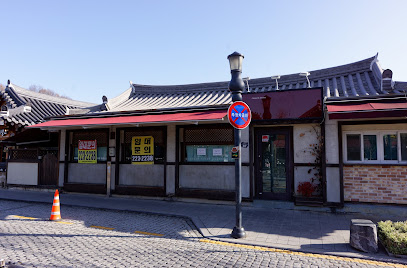
Jeonju Hyundaiok
Discover authentic Korean flavors at Jeonju Hyundaiok, where traditional cuisine meets warm hospitality in the heart of Jeonju.

Omokdae
Explore Omokdae, a stunning historical landmark in Jeonju, South Korea, offering scenic views and rich cultural heritage.

Nomadic Beer Garden 노매딕 비어가든
Experience the best of Jeonju's craft beer scene at Nomadic Beer Garden, where great brews meet a beautiful garden ambiance.

Nomadic Brewing Company
Experience the vibrant craft beer culture at Nomadic Brewing Company in Jeonju, a cozy brewery and bar perfect for beer lovers.

Bar Cold Dawn
Discover Bar Cold Dawn in Jeonju, a cocktail haven offering unique drinks and a cozy atmosphere for an unforgettable night out.

Deepin
Experience the vibrant atmosphere and diverse drink offerings at Deepin, Jeonju's favorite pub for locals and tourists alike.

Imogdae
Experience the tranquil beauty and rich history of Imogdae in Jeonju, South Korea, where tradition and culture come alive.
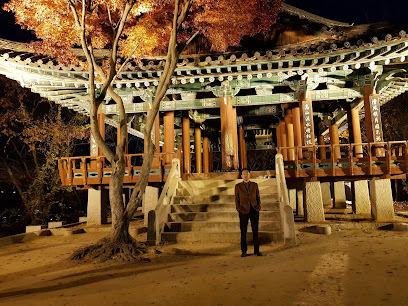
Jazz Pub Roy
Discover the vibrant atmosphere and captivating live jazz music at Jazz Pub Roy, a must-visit spot in Jeonju for music lovers and tourists alike.
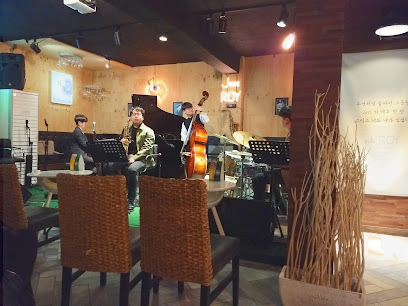
무드 카페 & 펍 Mood Cafe & Pub
Experience Jeonju's local charm at Mood Cafe & Pub, where creative cocktails meet a cozy atmosphere for the ultimate relaxation.

Pub New Malden
Discover the vibrant Irish spirit at Pub New Malden, a cozy haven in Jeonju-si for unforgettable nights filled with laughter and great drinks.

Oddity Bar
Discover the charm of Oddity Bar in Jeonju, a unique bar offering innovative cocktails and delightful bites in a cozy atmosphere.

Local Phrases
-
- Hello안녕하세요
[annyeonghaseyo] - Goodbye안녕히 가세요
[annyeonghi gaseyo] - Yes네
[ne] - No아니요
[aniyo] - Please/You're welcome부탁합니다/천만에요
[butakhamnida/cheonmaneyo] - Thank you감사합니다
[gamsahamnida] - Excuse me/Sorry죄송합니다
[joesonghamnida] - How are you?어떻게 지내세요?
[eotteoke jinaeseyo?] - Fine. And you?잘 지내요. 그리고 당신은요?
[jal jinaeyo. geurigo dangsineunyo?] - Do you speak English?영어 할 수 있어요?
[yeongeo hal su isseoyo?] - I don't understand이해하지 못해요
[ihaehaji mothaeyo]
- Hello안녕하세요
-
- I'd like to see the menu, please메뉴를 보고 싶어요
[menyureul bogo sipeoyo] - I don't eat meat고기를 먹지 않아요
[gogireul meokji anayo] - Cheers!건배!
[geonbae!] - I would like to pay, please계산할게요
[gyesanhalkkeyo]
- I'd like to see the menu, please메뉴를 보고 싶어요
-
- Help!도와주세요!
[dowajuseyo!] - Go away!가라!
[gara!] - Call the Police!경찰을 불러주세요!
[gyeongchareul bulleojuseyo!] - Call a doctor!의사를 불러주세요!
[uisareul bulleojuseyo!] - I'm lost길을 잃었어요
[gireul ilheosseoyo] - I'm ill아픈 것 같아요
[apeun geot gatayo]
- Help!도와주세요!
-
- I'd like to buy...사고 싶어요...
[sago sipeoyo...] - I'm just looking둘러보고 있어요
[dulleobogo isseoyo] - How much is it?얼마에요?
[eolmaeyo?] - That's too expensive너무 비싸요
[neomu bissayo] - Can you lower the price?가격을 깎아 줄 수 있어요?
[gageogeul kkakka jul su isseoyo?]
- I'd like to buy...사고 싶어요...
-
- What time is it?지금 몇 시에요?
[jigeum myeot sieyo?] - It's one o'clock한 시에요
[han sieyo] - Half past (10)10시 반
[sipshi ban] - Morning아침
[achim] - Afternoon오후
[ohu] - Evening저녁
[jeonyeok] - Yesterday어제
[eoje] - Today오늘
[oneul] - Tomorrow내일
[naeil] - 1하나
[hana] - 2둘
[dul] - 3셋
[set] - 4넷
[net] - 5다섯
[daseot] - 6여섯
[yeoseot] - 7일곱
[ilgob] - 8여덟
[yeodeol] - 9아홉
[ahop] - 10열
[yeol]
- What time is it?지금 몇 시에요?
-
- Where's a/the...?...이 어디에요?
[...i eodieyo?] - What's the address?주소가 뭐에요?
[jusoga mwoeyo?] - Can you show me (on the map)?(지도로) 보여 줄 수 있어요?
[(jidoro) boyeo jul su isseoyo?] - When's the next (bus)?다음 (버스)는 언제에요?
[daeum (beoseu)neun eonjeyo?] - A ticket (to ....)(...으로) 표 하나 주세요
[(...euro) pyo hana juseyo]
- Where's a/the...?...이 어디에요?
History of Omokdae and Imokdae
-
Omokdae is a historic site situated on a hill that offers panoramic views of Jeonju. Constructed in 1443 during the Joseon Dynasty, it commemorates the achievements of King Taejo, the founder of the dynasty. The site features a pavilion where it is believed that King Taejo celebrated his victory over the Goryeo forces. Omokdae holds cultural significance not only for its association with royal lineage but also as a place of gathering for scholars and officials in ancient times.
-
Adjacent to Omokdae, Imokdae is another important historical landmark, built in the early 15th century. It is dedicated to the Confucian scholar Jeong Mong-ju, who is revered for his loyalty and integrity. The pavilion served as a space for scholars to discuss Confucian ideals, reflecting the strong influence of Confucianism in the region. This site represents the philosophical and educational pursuits that characterized the Joseon Dynasty and continues to be a symbol of scholarly excellence in Jeonju.
-
Both Omokdae and Imokdae are integral to Jeonju's cultural events, particularly during the Jeonju Hanji Festival and the Jeonju International Film Festival. These festivals often include traditional performances, art displays, and historical reenactments that celebrate the rich heritage of the area. The pavilions serve as a backdrop for various cultural activities, attracting both locals and tourists who seek to immerse themselves in Jeonju's vibrant history and traditions.
-
In recent years, there have been significant efforts to restore and preserve the structures of Omokdae and Imokdae. These initiatives aim to maintain the integrity of these historical sites while making them accessible to a wider audience. The preservation of these landmarks is essential for educational purposes, allowing visitors to learn about the historical narratives of the Joseon Dynasty and the cultural heritage of Jeonju.
-
Today, Omokdae and Imokdae stand as pivotal points in Jeonju's historical landscape. They are frequented by tourists exploring the Hanok Village and the surrounding areas. The sites are not only admired for their historical significance but also for their scenic beauty, as they offer stunning views of the city and the surrounding mountains. This blend of history and natural beauty makes Omokdae and Imokdae essential stops for anyone wishing to understand the depth of Jeonju's cultural heritage.
Omokdae and Imokdae Essentials
-
Omokdae and Imokdae are conveniently located within Jeonju and can be easily accessed from other neighborhoods. If you're coming from Jeonju Station, take bus 5 or 7, which will take you directly to the Hanok Village area, close to Omokdae and Imokdae. Alternatively, a taxi from the station will take approximately 10-15 minutes. If you're traveling from Jeonju Hanok Village, it's just a short 15-minute walk to these sites.
-
The best way to explore Omokdae and Imokdae is on foot, as the area is pedestrian-friendly and compact. Bicycles can be rented from local shops if you wish to cover more ground. Local buses also connect various parts of Jeonju, but for the most convenient experience, walking allows you to fully appreciate the scenic beauty and historical significance of the area.
-
Omokdae and Imokdae are generally safe neighborhoods for tourists, with low crime rates. However, standard travel precautions should be observed. Avoid isolated areas after dark and keep an eye on your belongings, especially in crowded places. While there are no specific high-crime areas targeting tourists, it's wise to be vigilant, particularly in busier tourist spots.
-
In case of emergencies, dial 112 for the police or 119 for fire and medical assistance. There are hospitals and clinics in Jeonju, and it’s advisable to have travel insurance that covers medical emergencies. For minor health issues, local pharmacies can provide over-the-counter medications.
-
Fashion: Do dress modestly, particularly when visiting cultural sites. Avoid clothing that may be considered revealing. Religion: Do respect local customs and traditions, including bowing your head slightly in places of worship. Public Transport: Do be respectful to other passengers, giving up your seat for the elderly. Don’t eat or drink on public transport. Greetings: Do greet locals with a polite bow or handshake. Eating & Drinking: Do try local delicacies, especially bibimbap. Don't refuse food offerings, as this can be seen as impolite.
-
To experience Omokdae and Imokdae like a local, visit during the early morning or late afternoon to avoid crowds and enjoy a peaceful atmosphere. Engage with local vendors for traditional snacks and drinks. Look for the hidden art installations and local crafts in nearby alleyways, which often go unnoticed by tourists. Participating in local festivals can also enhance your experience and understanding of the area's culture.
Nearby Cities to Omokdae and Imokdae
-
Things To Do in Daejeon
-
Things To Do in Gwangju
-
Things To Do in Suncheon
-
Things To Do in Daegu
-
Things To Do in Mokpo
-
Things To Do in Suwon
-
Things To Do in Andong
-
Things To Do in Busan
-
Things To Do in Incheon
-
Things To Do in Gyeongju
-
Things To Do in Ulsan
-
Things To Do in Seoul
-
Things To Do in Pohang
-
Things To Do in Chuncheon
-
Things To Do in Jeju City










